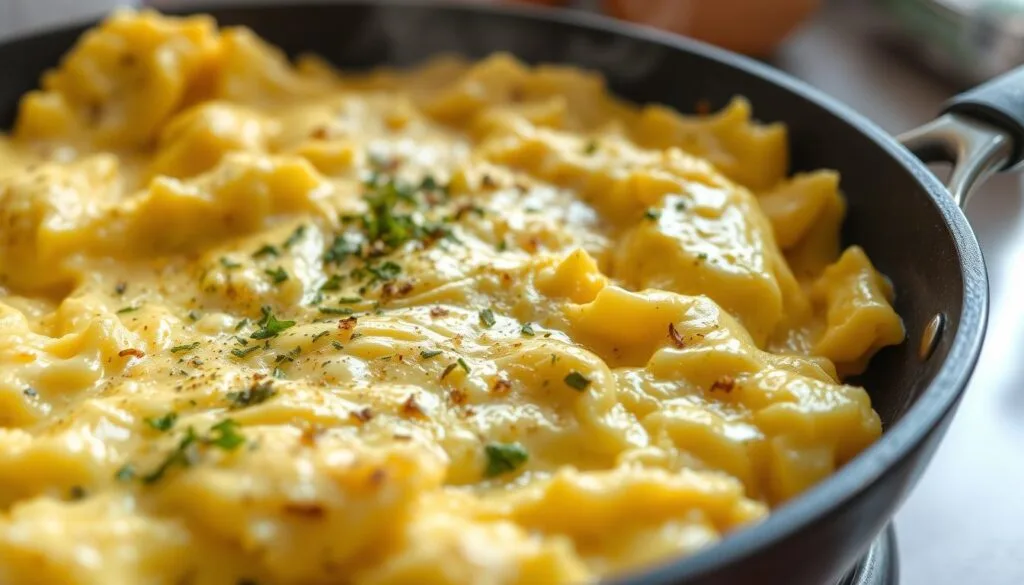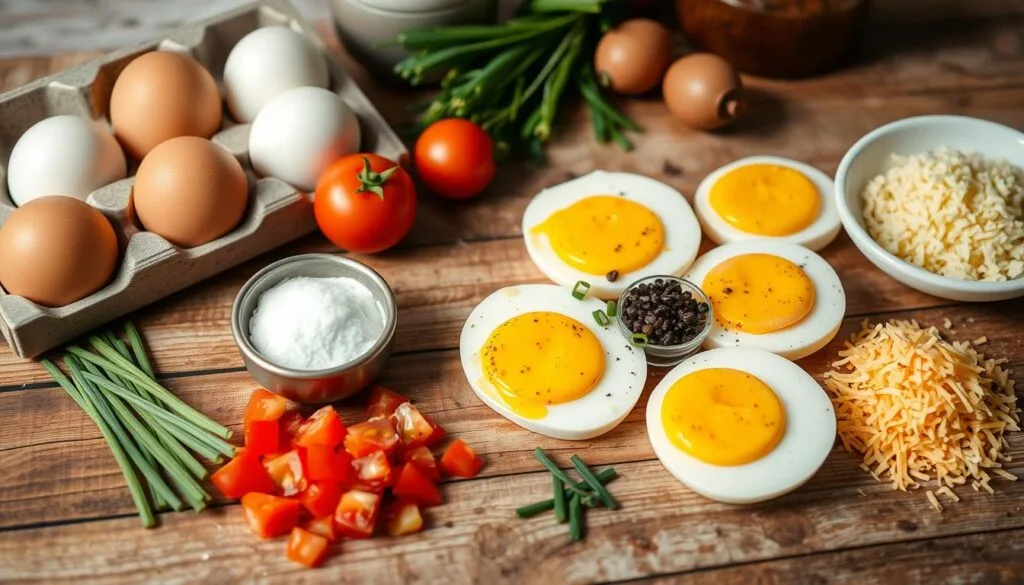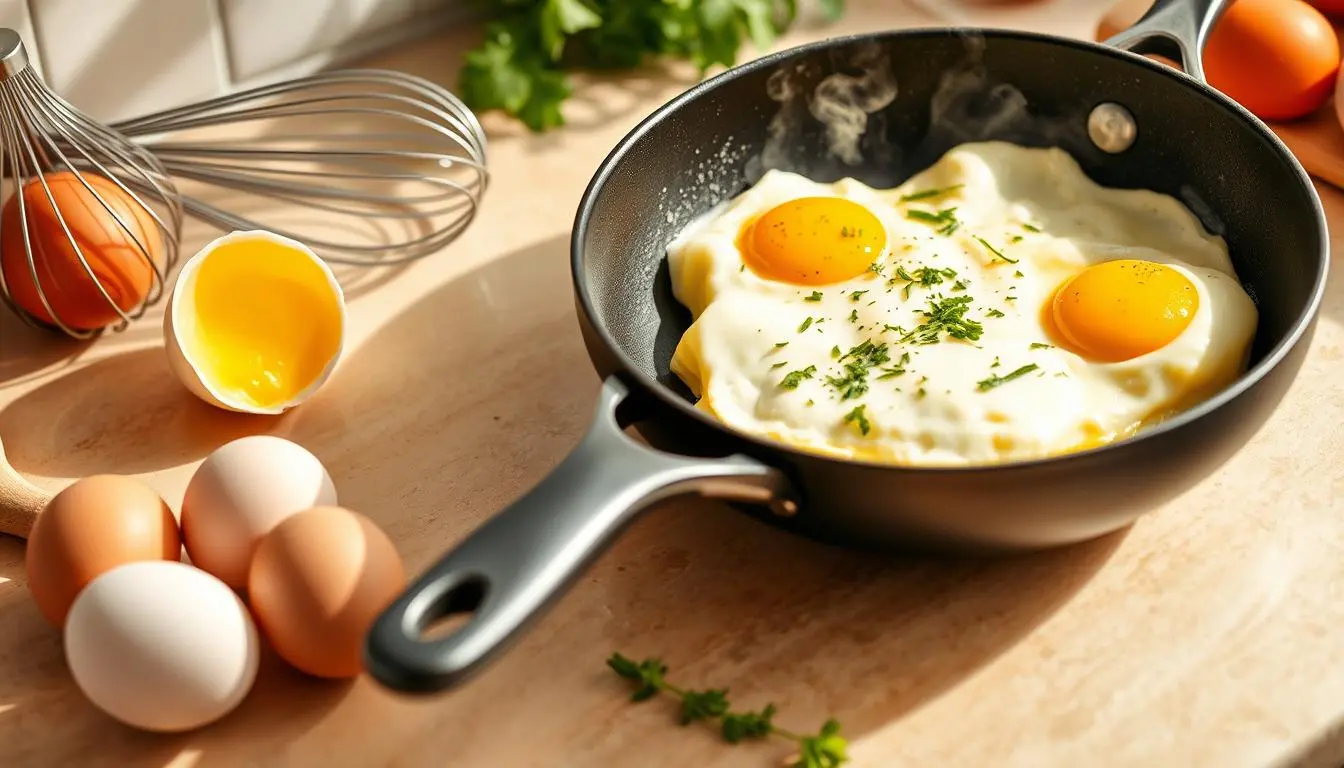Table of Contents
The sizzle of butter melting in a pan, the crack of an eggshell, and the gentle whisking sound – these are the morning melodies that bring back cherished memories of my grandmother’s kitchen. Her scrambled eggs were always a comforting hug on a plate. Now, it’s your turn to create that same magic in your kitchen. This guide will help you master the art of making perfectly seasoned scrambled eggs, transforming a simple breakfast into a delightful culinary experience.
Whether you’re a novice cook or a seasoned chef, this step-by-step guide will elevate your egg scrambler game. You’ll learn the secrets to achieving that creamy texture and rich flavor that makes good seasoned scrambled eggs truly irresistible. From selecting the right ingredients to mastering the perfect cooking technique, we’ve got you covered.
egg scrambler
- Learn the basics of perfect scrambled eggs
- Discover essential ingredients for seasoning
- Master the ultimate egg scrambler technique
- Choose the right pan to get optimal results.
- Understand proper heat settings and timing
- Explore basic and advanced seasoning combinations
Understanding the Basics of Perfect Egg Scrambler
Mastering egg scrambler begins with knowing the basics. The egg-to-milk ratio is key for texture. For creamy eggs, add 1 tablespoon of milk per egg. For drier scrambles, use no milk.
Cooking at the right temperature is crucial. Use medium-low heat for even cooking without burning. This method cooks the eggs slowly, making them tender.
Timing is key when scrambling eggs. Cook them until they’re just set but still moist. Overcooking makes them dry and rubbery.

If you’re watching calories, you might wonder about scrambled egg calories. A large egg scrambler has about 91 calories. Eggs are a good source of protein and low in calories, making them great for many diets.
| Nutrient | Amount per Large Egg |
|---|---|
| Calories | 91 |
| Protein | 6.3g |
| Fat | 7g |
| Carbohydrates | 0.4g |
These basics are the foundation for tasty scrambled eggs. As you practice, you’ll find the perfect consistency and flavor for you.
Essential Ingredients for Seasoned Scrambled Eggs
To make delicious seasoned scrambled eggs, start with the right ingredients. You’ll need high-quality eggs, dairy, and seasonings. Let’s look at these key items that will make your eggs stand out.

Eggs are the main attraction. Pick fresh, organic eggs for the best taste and texture. Large or extra-large eggs are usually the best choice. Free-range eggs have richer yolks and a deeper flavor.
Dairy makes your eggs creamy. Whole milk is a classic pick, but heavy cream or half-and-half can add luxury. For a lighter version, try unsweetened almond milk or skip the dairy.
Seasonings are what make your scrambled eggs special. Begin with salt and black pepper. Then, try different herbs and spices to find your favorite flavors. Here’s a table of popular seasoning combinations:
| Seasoning Combination | Ingredients | Flavor Profile |
|---|---|---|
| Classic | Salt, pepper, chives | Simple and savory |
| Mediterranean | Oregano, basil, garlic powder | Herbaceous and aromatic |
| Spicy | Cayenne, paprika, red pepper flakes | Bold and fiery |
| Smoky | Smoked paprika, cumin, dried thyme | Earthy and warm |
With these ingredients, you’re set to make seasoned scrambled eggs that will wow everyone. The secret to great eggs is finding the right balance of ingredients to match your taste.
The Ultimate Egg Scrambler Technique

Scrambling eggs is all about finesse and precision. The secret to perfect scrambled eggs is in the whisking. Crack the eggs inside a dish, then beat them using a fork or a whisk.
This adds air, making the eggs fluffy. Use your egg scrambler to mix the eggs until they’re fully blended. The eggs should look the same color, with no white streaks.
Season the eggs with your favorite spices before cooking. Gently mix them into the egg mixture with your egg scrambler. This spreads the flavors evenly, making each bite better.
- Whisk eggs until no streaks remain
- Use a circular motion with your egg scrambler
- Incorporate seasonings before cooking
When pouring the eggs into the pan, have your egg scrambler ready. Use it to push the eggs towards the center as they cook. This makes the eggs soft and creamy, avoiding overcooking.
Timing and technique are key to perfect scrambled eggs. With practice, you’ll get great at using your egg scrambler to make delicious, fluffy eggs every time.
Choosing the Right Pan for Scrambled Eggs
Choosing the right pan is key when making scrambled eggs. The type of pan you use can change how your eggs turn out.
Non-stick pans are great for scrambled eggs. They stop eggs from sticking and make flipping and stirring easy. They’re perfect for beginners.
Stainless steel pans cook eggs evenly. They need oil or butter to prevent sticking. This can make your eggs have a nice crust.
Cast iron pans keep heat well and make eggs taste good. They need to be seasoned to stay non-stick. Cast iron pans are best for big batches of eggs.
| Pan Type | Pros | Cons |
|---|---|---|
| Non-stick | Easy to use, less oil needed | May not last as long |
| Stainless Steel | Even heat distribution | Requires more oil |
| Cast Iron | Retains heat well | Needs seasoning |
Try out different pans to see what works best for you. The pan you pick can change how your eggs taste and feel.
Proper Heat Settings and Timing
Getting the heat right is key for perfect scrambled eggs. Start with medium-low heat on the stovetop. This gentle heat prevents overcooking and keeps eggs soft and creamy. Adjust the heat as you cook. If eggs cook too fast, lower the heat.
For bigger batches, try oven baked scrambled eggs. Preheat your oven to 350°F. Whisk eggs with milk, salt, and pepper in an oven-safe dish. Bake for 11-15 minutes, stirring every 4-5 minutes. This method is good for feeding a crowd or meal prepping.
Timing is crucial for both methods. On the stove, eggs cook in 3-5 minutes. Remove from heat when they’re slightly underdone, as they’ll cook a bit more. For oven baked scrambled eggs, cooking time is 15-20 minutes. Every oven is different, so check often to avoid overcooking.
| Method | Temperature | Cooking Time |
|---|---|---|
| Stovetop | Medium-low | 4-5 minutes |
| Oven | 350°F | 15-20 minutes |
Mastering heat and timing will make your scrambled eggs better. Try both stovetop and oven methods to find your favorite way.
Basic Seasoning Combinations
Learning to make seasoned scrambled eggs begins with basic flavors. Salt and pepper are the base of any egg dish. Begin with a pinch of kosher salt and freshly ground black pepper to boost the eggs’ taste.
For a classic taste, add chopped chives or parsley. These herbs add a subtle onion flavor and a splash of green. If you want something bolder, try thyme or oregano.
Spice enthusiasts can add paprika or cayenne pepper for warmth. These spices enhance the flavor without overpowering it. For a Mediterranean flavor, sprinkle za’atar or sumac before cooking.
| Seasoning Combo | Flavor Profile | Best Paired With |
|---|---|---|
| Salt + Pepper + Chives | Classic, fresh | Toast, avocado |
| Paprika + Garlic Powder | Smoky, savory | Roasted potatoes |
| Herbs de Provence | Aromatic, herbaceous | Crusty bread, tomatoes |
The secret to great scrambled eggs is balance. Begin with small portions and then taste it as you move on. This ensures your seasoning complements the eggs’ natural taste.
Advanced Flavor Enhancements
Want to make your egg scrambler even better? Try using gourmet ingredients and unique flavors. Start by adding different cheeses. Crumbling feta adds a tangy taste, while melted gruyere brings a rich, nutty flavor.
For a Mediterranean twist, add sun-dried tomatoes and fresh basil just before the eggs are done.
Vegetables can also make your scrambled eggs better. Sauté mushrooms, spinach, or bell peppers before adding eggs. Adding diced ham, crispy bacon, or smoked salmon boosts both flavor and nutrition.
Don’t forget to try different spice blends. Za’atar gives a Middle Eastern flavor, while curry powder adds an Indian twist. For a Mexican touch, use chili powder and cumin, then top with cilantro and salsa.
- Cheese options: feta, gruyere, cheddar
- Veggies: mushrooms, spinach, bell peppers
- Proteins: ham, bacon, smoked salmon
- Spice blends: za’atar, curry powder, chili-cumin mix
The secret to mastering these flavors is to add them at the right time. Add delicate ingredients like herbs towards the end to keep their flavors and aromas. With practice, you’ll make gourmet scrambled eggs that everyone will love.
Mastering the Folding Technique
Learning to make seasoned scrambled eggs well means mastering the folding technique. This method is key to getting the right texture and consistency. You need to gently push the eggs from the edges towards the center, making soft folds.
Begin by tilting the pan a bit. As the eggs start to set, use a spatula to push them across the pan. This action creates big, fluffy curds. For creamier eggs, fold less often. For firmer eggs, fold more.
| Texture | Folding Technique | Result |
|---|---|---|
| Fluffy | Gentle, infrequent folds | Large, soft curds |
| Creamy | Slow, continuous folding | Smooth, velvety texture |
| Firm | Quick, frequent folds | Smaller, denser curds |
Remember, practice is key. Try out these techniques to find your favorite way to make seasoned scrambled eggs. The folding method you choose greatly affects the texture and taste of your dish.
Common Mistakes to Avoid
Using an egg scrambler can lead to mistakes that spoil your breakfast. One big mistake is overcooking your eggs. This makes them dry and tasteless. To fix this, take your eggs off the heat when they’re still a bit wet. They’ll cook a bit more from the heat they’ve absorbed.
Another common error is not seasoning enough. Don’t hold back on salt and pepper. Season your eggs before cooking and keep tasting. Remember, you can always add more, but you can’t take it away.
Choosing the wrong pan can also be a problem. A non-stick pan is best for scrambled eggs. It stops eggs from sticking and makes cleaning up easy. If you’re using a stainless steel pan, make sure it’s well-oiled to prevent eggs from sticking.
- Don’t cook on high heat. Low or medium heat is ideal for scrambled eggs.
- Avoid adding milk or cream. This can make your eggs watery.
- Don’t forget to preheat your pan. A cold pan could result in an uneven cooking.
By avoiding these common mistakes, you’ll get better at making scrambled eggs. With practice and paying attention to details, you’ll make perfect eggs every time.
Nutritional Benefits of Scrambled Eggs
Scrambled eggs are a nutritional powerhouse. They’re full of quality protein, minerals, and vitamins. A serving of three scrambled eggs has about 18 grams of protein. This is essential to building and repairing muscles..
How many calories do you get from 3 scrambled eggs? On average, three large scrambled eggs have around 240-270 calories. The exact calorie count can change based on how you cook them and what you add. Here’s a detailed look at their nutritional content:
| Nutrient | Amount per 3 scrambled eggs |
|---|---|
| Calories | 240-270 |
| Protein | 18g |
| Fat | 19g |
| Carbohydrates | 1g |
Eggs are also packed with vitamins A, D, E, and B complex. They’re a good source of minerals like selenium, zinc, iron, and phosphorus. The yolks have choline, which is great for brain health and development.
Eating scrambled eggs can help you feel full longer. This might help with weight management. They’re also very flexible and can be part of many diets. This makes them a great choice for breakfast or any meal.
Variations and Creative Twists
Scrambled eggs are super versatile, offering many creative options. Oven baked scrambled eggs are a hit, making fluffy, even eggs great for big groups. To bake, whisk eggs with milk, pour into a greased dish, and bake at 350°F for 10-15 minutes, stirring now and then.
For a taste of the world, try Spanish-style eggs with tomatoes and peppers, or French eggs with herbs and cheese. Vegetarians can add sautéed veggies, and vegans can use tofu instead of eggs.
Make breakfast fun by serving eggs in avocado halves, bell pepper rings, or in bread rolls. These ideas make breakfast not just tasty but also great for photos.
| Variation | Key Ingredients | Cooking Method |
|---|---|---|
| Oven Baked Scrambled Eggs | Eggs, milk, butter | Baked in oven |
| Spanish Scramble | Eggs, tomatoes, peppers, onions | Stovetop |
| Vegan Tofu Scramble | Firm tofu, turmeric, nutritional yeast | Stovetop |
| Avocado Egg Boats | Eggs, avocados, cheese | Baked in oven |
Plating and Presentation Tips
The final touch in making good seasoned scrambled eggs is the presentation. A well-plated dish can turn your breakfast into a feast for the eyes. Choose a warm, clean plate that complements your eggs’ color. Spoon your perfectly seasoned scrambled eggs onto the center, creating a neat mound.
Garnishes can elevate your scrambled eggs from ordinary to extraordinary. Fresh herbs like chives, parsley, or dill add a pop of color and fresh flavor. A sprinkle of paprika or a dash of hot sauce can create visual interest and extra taste. Remember, these additions should enhance, not overpower, your seasoned scrambled eggs.
Consider pairing your eggs with complementary side dishes. Crispy bacon, golden toast, or roasted tomatoes can create a balanced plate. For a gourmet touch, serve your eggs in a unique vessel like a miniature skillet or a hollowed-out avocado half. This unexpected presentation can make your seasoned scrambled eggs the star of any brunch table.
Lastly, don’t forget about texture contrast. A sprinkle of crunchy seeds or nuts can add an interesting element to your creamy eggs. By mastering these plating techniques, you’ll transform your good seasoned scrambled eggs into a visually stunning and appetizing meal every time.


1 thought on “1+ Good seasoned egg scrambler Step-by-step guide.”
Comments are closed.